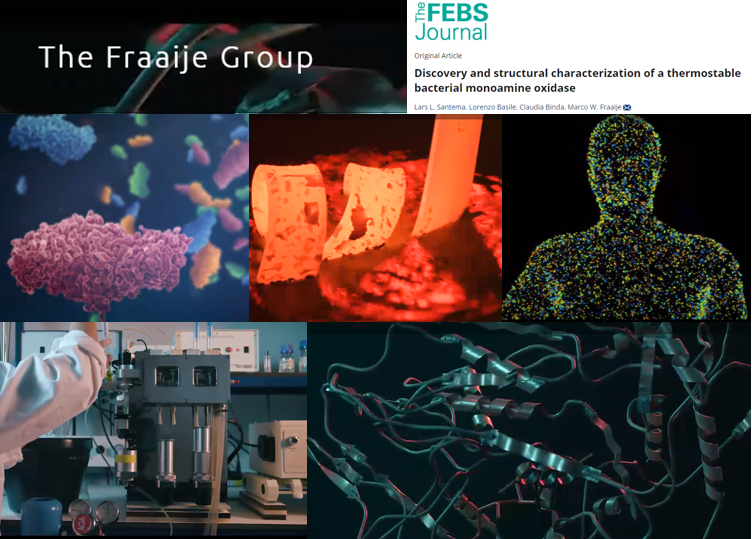Discovery and structural characterization of a thermostable bacterial monoamine oxidase
Within OXIPRO we are setting up an efficient methodology to identify relevant oxidative enzymes. Our latest publication in this specific area is now available.
In a significant research development, the OXIPRO team at the University of Groningen (RUG) has recently managed to quickly produce and test such oxidative biocatalysts. Taking advantage of this, the team, led by Marco Fraaije, has discovered a monoamine oxidase (MAO) that is very robust, and active on a range of amines.
RUG researcher Lars Santema explains: “Biogenic amines are formed by microorganisms contaminating food and cause a wide range of malodourous smells, like the infamous fish odour. Because of this, they are often used as an indicator for the quality of food or wine. Classical methods to detect minute amounts of biogenic amines are costly and time consuming. Using biosensors, these problems can be circumvented.
To enable the development of these biosensors we discovered a thermostable bacterial monoamine oxidase (MAO). The newly reported enzyme is easily expressed and has a high-resolution structure resolved, which looks remarkably similar to the human MAO linked to a wide range of diseases, such as depression. This newly discovered MAO can be used to develop biosensors for food spoilage, to be added to food to remove malodourous smells or, due to its similarity to human MAO, it can have a potential future in the pharmaceutical industry”.
You can access the original article here and find out more about the Biotransformation and Biocatalysis team here.
